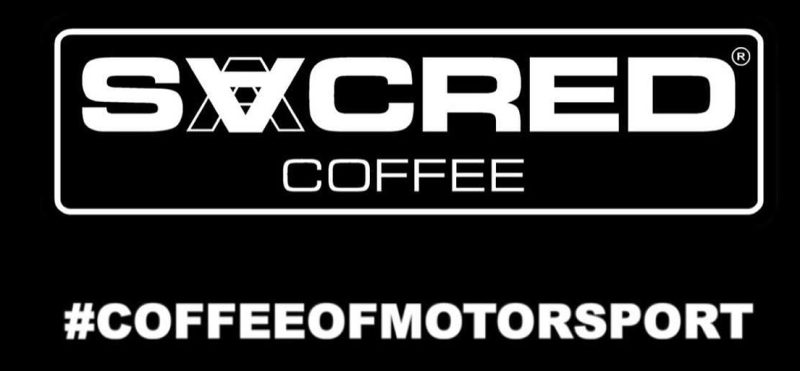“Ferrari was the ultimate cold warrior. He required enemies with an addict’s need and functioned best when angry. Enzo Ferrari was best defined by his enemies.
By June, 1954 Jaguar was Ferrari’s strongest enemy, at least since the relentless and percussive drubbing administered by the works’ C-Types during the 1953 24 Hours. But Ferrari was the world champion at sports cars and stubbornness and had won consecutive World Championships in Formula 1. Instead of admitting that Dunlop’s disc brakes were the true path, he merely built bigger engines. He put more power in the cockpit as well. In addition to proven Le Mans winners like Louis Rosier and such \ reliable regulars as Robert Manzon and Maglioli and Marzotto, he paired two of his F1 men, Maurice Trintignant and Froilan Gonzalez, in another mighty 375 Plus.
Gonzalez didn’t look the part: bald and doughy, he looked less like an F1 driver than even Ascari, but it was the stout Argentinean who broke Alfa’s back for Ferrari, at Silverstone in 1951. Gonzalez couldn’t be bullied by other drivers or a car: any car. Not even Ferrari’s noisy, potent, fast and unpleasant 375 Plus.
If Moss was Jaguar boss Lofty England’s hit man, his Ferrari counterpart was Gonzalez, “the Pampas Bull”, and there wasn’t a drop of hyperbole in his nickname.
The entry list for 1954 was somewhat trimmer in terms of marques, but not numbers. Mercedes-Benz was toiling at full boil to birth their latest single-seater for the new 2.5 liter grand prix formula and gave the 1954 24 Hours a pass. Maserati hoped to make its Sarthe debut with a fleet of A6-derivatives, but the factory transporter crashed on it way to France and the Trident equipe scratched en masse. Pity. Their glorious new 250F GP car had won the opening rounds of the new Formula F1 season, scoring before even Mercedes-Benz arrived, and the new sports cars were artistic and quick. Lancia left their Miglia-winning D24 roadsters home as well, ignoring the doings on the Sarthe, plotting F1 revolution.
It was Coventry who had stolen the headlines. Their stunning new Jaguar D-Type was a brilliant successor of the glorious C-Type. It was created for just one reason, to win Le Mans, and team manager Lofty England had aimed three of them at the Sarthe.
Moss was teamed with ’51 winner Peter Walker, his ex-partner, Peter Whitehead, was assigned the #15 D-Type with Ken Wharton and 1953 winners Tony Rolt and strong man Duncan Hamilton drew the #14 D-Type. Behind them , Jacques Swaters and Roger Laurent in the Belgian Ecurie Francorhamps C-Type. Aston Martin had a trio of DB3Ss plus a V-12 Lagonda based on a pair of Aston DB3 straight-sixes. Briggs Cunningham brought two 5.5 liter cars bearing his name plus a white and blue Ferrari for the fast and reliable pairing of John Fitch and Phil Walters. Fon Portago made his Le Mans debut in a private Maserati A6GCs.Le Mans-obsessed Pierre Levegh was back to try his aging 4.5 Talbot one more time. But Le Mans had changed and no car signaled that technological reality better than the D-Type.
The ’54 race was a pure and polarized Ferrari vs. Jaguar fight from the minute the cops closed the roads for practice on Wednesday. The standing records were erased almost instantly.
At 3:45 p.m., June 12th, the precursor to Radio Le Mans came on the air with a live report from the Press Stand through the proper tones of Britain’s voice of motor racing, the Raymond Baxter. The brief program was scheduled for just 25 minutes and entitled “The Start”. Few ad libs were necessary.
Manzon’s Ferrari was first away and when the leaders returned for the first lap photo-op Ferraris were one (Gonzalez)-two (Manzon)-three (Marzotto) with an impassive Moss at their heels. Then a large and silent gap to the mob; Rolt, Wharton, who had crumpled a fender on the opening lap, and big Bill Spear’s booming Cunningham and the rest of the spear carriers, then the wanna-bes and aspirants followed by the under card and Index players.
When Baxter left the air at 4:15 p.m. European Summer Time, Moss was hounding the Ferrari’s at his leisure while his teammates began to move up to join the Ferrari-Ferrari-Ferrari-Jaguar formation.
At 5:00 p.m. Moss had shrugged off a brief shower and put his D-Type ahead of Manzon and was annoying Marzotto at close quarters, probing for a weakness he knew was there and reminding the red cars that, regardless of their plans, he was playing a the long game. Suddenly Moss ripped off a new lap record and put himself ahead of Gonzalez who was blandly unimpressed and moved back in front without much force.
Marzotto pitted first. Then Rolt stopped and handed over to Duncan Hamilton. Manzon stopped and gave the number-five 375 Plus to 1950 24 Hour winner Louis Rosier. Gonzalez was in two laps later but stayed in the leading number-four Ferrari. With the grand prix to the first pit stop run, the race settled down to a straight fight between Jaguar and Ferrari.
By the time Raymond Baxter welcomed his English-speaking radio audience back to Le Mans for his two minute report; Pierre Levegh had damaged the suspension on his Talbot and retired and the rain had stopped. But the big news concerned the D-Types. After the first stops they all began to misfire and complain. Peter Walker was stranded on the back of the course. His primitive repairs cost over 45 minutes. The other D-Types were called to the pits for somewhat quicker but, still, time consuming repairs to change plugs and finally, after Hamilton tried the #14 for diagnostic purposes, clearing the fuel filters. Problem solved.
Gonzalez was still in the cockpit of the leading Ferrari at the four hour mark and all three red works cars were on schedule. The only Ferrari out was Rubirosa’s 4.5 liter 375 MM which went during the second hour. But the urbane Profirio had brought a bored Zsa Zsa Gabor along for a peek at le ronde infernale, so his day was hardly over.
Neither was the rain which made Le Mans’ agonizingly slow gloaming hours miserable. Full dark was no better and the conditions were rotten to worse. The first blow to Ferrari came before midnight: Umberto Maglioli pitted the second-place Ferrari with a cracked transmission only to have the number-three 375 Plus taken from him and pushed to the dead car park.
Gonzalez now had a two lap lead on the Ken Wharton/Peter Whitehead D-Type. Moss was in the pits again, this time it was brake trouble . The brake booster failed approaching Mulsanne obliging Moss to make a long fast run down the escape road. This alarmed a pair of the gendarmerie who were just downstream of virage Mulsanne taking a cigarette break in the middle of RN158! Being Moss he collected the whole thing and got back to the pits but the D-Type was sent to join the Maglioli Ferrari behind the pits.
As time distilled the reality of the race it became a two-car fight between the leading Ferrari of Gonzalez and Trintignant (mostly Gonzalez) and the Jaguars. What with the rain and the dark and the torque, the Argentine was the only man who could exploit the glories of the 4.9 375 MM. Trintignant provided physical relief for Gonzalez who had removed a whopping eleven seconds off Ascari’s 1953 lap record. But the relentless Britons had taken a lap of Gonzalez’s lead from the Ferrari during one of Trintignant’s stints.
Then it began to rain again. This time seriously.
By 9:30 a.m. it was teeming but stopwatches said Gonzalez barely noticed. As the rain abated Gonzalez responded, the wet roads soaking the big drum brakes and providing some cooling relief. Happily, for the Ferrari, less than half of the 57 starters were parked and traffic was one less thing to worry about: Gonzalez’s one lap-plus-a-bit lead was steady. The rain returned after lunch and the race began anew.
Gonzalez pitted. It was a routine stop and should have seen him through until the end. But when he depressed the starter button the engine refused. The mechanics checked everything. All seemed well. Still no spark. Then Rolt pitted the D-Type. He was too early and totally unexpected. A visor! he cried, not realizing that the leading Ferrari, pitted nearby, was in trouble. He was sent back to the course, frantically, now on the same lap as the stricken red car.
The Ferrari mechanics worked like demons. Modena team manager Nello Ugolini held his bowed head, lips moving, he seemed to be praying. Froilan Gonzalez sat inert and expressionless on the pit counter watching the mechanics. Eyes that weren’t fixed on the Ferrari stared toward Maison Blanch; was the next car green? No? The next? The next?
Gonzalez moved with speed belying his bulk. The big engine finally fired and he was gone. A minute and a half later Rolt screamed by. At the 23 hour mark the Argentinean had put another 22 seconds between himself and the 1953 winners. Duncan Hamilton took over the English car from Tony Rolt and left the pits with a grim expression and his chin well down. He took 20 seconds back from Gonzalez who seemed to be slowing. Then the Argentinian went faster again. What trouble now?
Gonzalez had neither slept nor eaten since before 4:00 o’clock Saturday, and he was now feeling the effects. But he was a bigger man in many ways and through sheer force of will set aside his considerable physical discomfort and beat the Jaguar by less than two and a half miles. It was heroic and both Rolt and Hamilton saluted the man who had brought Ferrari their first World Championship F1 victory and had now given Modena it’s first Le Mans win as well.
The lap record had been pulverized; even with the rain the total distance raced was nearly the same as the previous year. The ungainly Bristols had won the two-liter class for England with a stylish three-car formation finish taking the team prize. The 2.5 liter Gordini was sixth overall and first in the three-liter class for France. Bill Spear and Sherwood Johnson won the big displacement class with a fine third for Briggs Cunningham. Jacques Swaters was fourth in the year old C-Type for Belgium.
Only bad luck and teething troubles had prevented a maiden win by the alarmingly fast new Jaguar D-Type. Certainly they would have to be on the short list of favorites for the 1955 24 Hours. At least that was a kernel of wisdom in Raymond Baxter’s brief 15-minute Le Mans “Summing Up” BBC broadcast at 10:15 that evening.”














